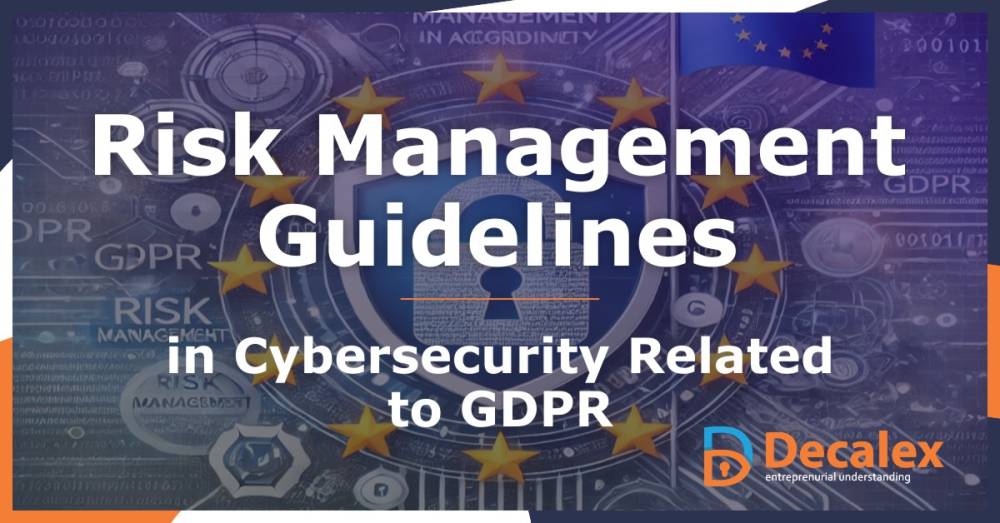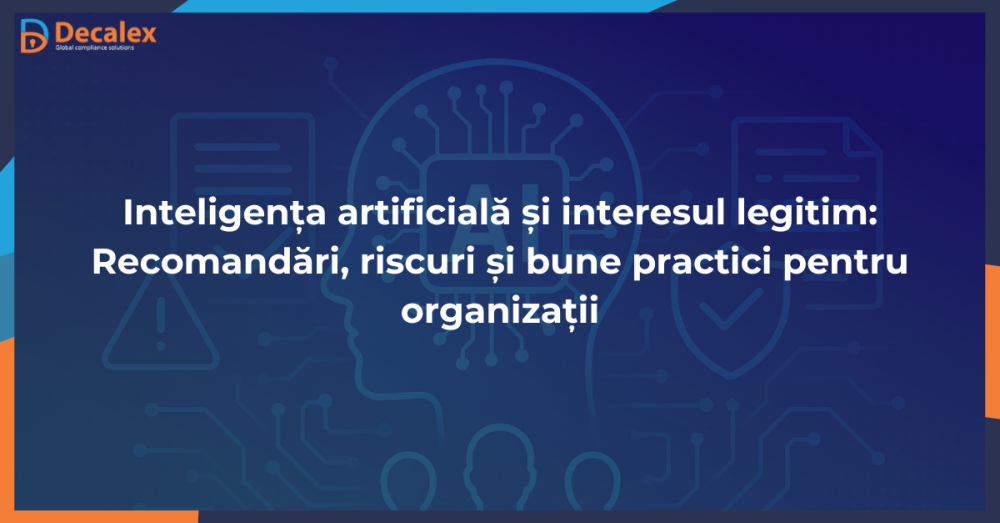Risk Management Guidelines in Cybersecurity Related to GDPR Compliance

As cyber threats continue to evolve in sophistication and frequency in a context characterized by the evolution of digital platforms and tools, companies are increasingly faced with new challenges in cyber security, data protection and privacy and the need for agile strategies to respond rapidly to the challenges posed by these threats. In this regard, cybersecurity risk management is a critical process for organizations of all sizes to protect their digital assets, personal data, sensitive information, and overall operational integrity. Companies must take a proactive approach to identifying, assessing and mitigating risks.
The General Data Protection Regulation (GDPR) helps organizations identify, assess and mitigate risks to personal data. This guide outlines steps and best practices for effective cybersecurity risk management to ensure GDPR compliance.
1. Understanding GDPR Requirements for Cybersecurity
Under GDPR, organizations are required to implement appropriate technical and organizational measures to protect personal data against unauthorized access, alteration, disclosure, or destruction. Key articles relevant to cybersecurity risk management include:
-
Article 5: Principles relating to the processing of personal data, emphasizing data protection by design and default.
-
Article 32: Security of processing, which mandates that organizations implement measures to ensure a level of security appropriate to the risk.
-
Article 33: Notification of personal data breaches to the supervisory authority.
-
Article 35: Data Protection Impact Assessments (DPIAs), required when processing operations are likely to result in a high risk to the rights and freedoms of individuals.
2. Steps for Cybersecurity Risk Management Related to GDPR
Step 1: Identify and Classify Personal Data
-
Data Inventory and Mapping: Identify all personal data processed by the organization, including customer information, employee data, and any other personal data. Map out where this data is stored, processed, and transferred.
-
Data Classification: Classify personal data based on its sensitivity and the potential impact of a breach. For example, special categories of personal data (such as health information) require a higher level of protection.
Step 2: Conduct a Risk Assessment
-
Identify Potential Threats and Vulnerabilities: Analyze potential threats to personal data, including external threats (e.g., hackers, malware) and internal threats (e.g., insider threats, employee negligence).
-
Assess Risks: Evaluate the likelihood and impact of each threat to personal data. Consider the consequences of data breaches, such as financial loss, reputational damage, and regulatory penalties.
-
Prioritize Risks: Rank risks based on their likelihood and potential impact to prioritize mitigation efforts.
Step 3: Implement Appropriate Security Measures
-
Technical Measures:
-
Encryption: Encrypt personal data both in transit and at rest to protect it from unauthorized access.
-
Access Controls: Implement strong access controls, such as role-based access, two-factor authentication, and least privilege principles, to ensure only authorized personnel can access personal data.
-
Regular Software Updates and Patch Management: Ensure that all systems and applications are regularly updated and patched to protect against known vulnerabilities.
-
Network Security: Use firewalls, intrusion detection systems (IDS), and intrusion prevention systems (IPS) to monitor and protect against unauthorized access.
-
Organizational Measures:
-
Data Protection Policies: Develop and enforce comprehensive data protection policies and procedures that outline how personal data should be handled and protected.
-
Employee Training and Awareness: Conduct regular training sessions to educate employees about GDPR requirements, data protection best practices, and their roles in protecting personal data.
-
Incident Response Plan: Develop and regularly update an incident response plan that outlines the steps to take in the event of a data breach. This plan should include breach notification procedures as required by GDPR.
Step 4: Conduct Data Protection Impact Assessments (DPIAs)
-
When to Conduct a DPIA: Conduct DPIAs when processing activities are likely to result in high risks to individuals’ rights and freedoms, such as when introducing new technologies or processing sensitive data.
-
DPIA Process:
-
Identify Risks: Assess potential risks to personal data and the rights of data subjects.
-
Evaluate Controls: Determine the effectiveness of existing controls in mitigating identified risks.
-
Implement Additional Measures: If necessary, implement additional measures to reduce risks to acceptable levels.
Step 5: Monitor and Review Security Measures
-
Continuous Monitoring: Implement continuous monitoring of security controls and personal data processing activities to detect and respond to new threats and vulnerabilities promptly.
-
Regular Audits and Assessments: Conduct regular security audits and assessments to evaluate the effectiveness of security measures and identify areas for improvement.
-
Review and Update Policies: Regularly review and update data protection policies, procedures, and security measures to ensure they remain effective and compliant with GDPR.
Step 6: Ensure Compliance and Documentation
-
Maintain Documentation: Keep detailed records of data processing activities, risk assessments, DPIAs, and security measures. This documentation demonstrates compliance with GDPR and readiness for potential audits by supervisory authorities.
-
Appoint a Data Protection Officer (DPO): If required, appoint a DPO to oversee data protection activities, advise on GDPR compliance, and act as a point of contact with supervisory authorities.
3. Best Practices for Cybersecurity Risk Management in GDPR Compliance
-
Adopt a Risk-Based Approach: Focus on mitigating the most significant risks to personal data first. Allocate resources to address high-priority risks that could have severe consequences.
-
Implement Privacy by Design and Default: Integrate data protection principles into all stages of system and process development. Ensure that personal data is minimized, pseudonymized, or anonymized whenever possible.
-
Engage Stakeholders: Involve all relevant stakeholders, including IT, legal, HR, and senior management, in cybersecurity risk management efforts to ensure a comprehensive approach.
-
Leverage Security Frameworks: Use established cybersecurity frameworks and standards, such as ISO/IEC 27001, NIST Cybersecurity Framework, and CIS Controls, to guide security risk management efforts.
-
Stay Updated on GDPR Guidance: Stay informed about guidance from supervisory authorities and data protection bodies regarding best practices for cybersecurity and GDPR compliance.
4. Conclusion
Effective cybersecurity risk management is essential for GDPR compliance. By following these guidelines, organizations can protect personal data, mitigate risks, and avoid substantial penalties associated with data breaches. Implementing a robust risk management framework ensures that organizations are better prepared to handle the dynamic landscape of cyber threats while respecting the privacy rights of individuals.
Diana Chebac
Senior Privacy & Data Protection Consultan



































